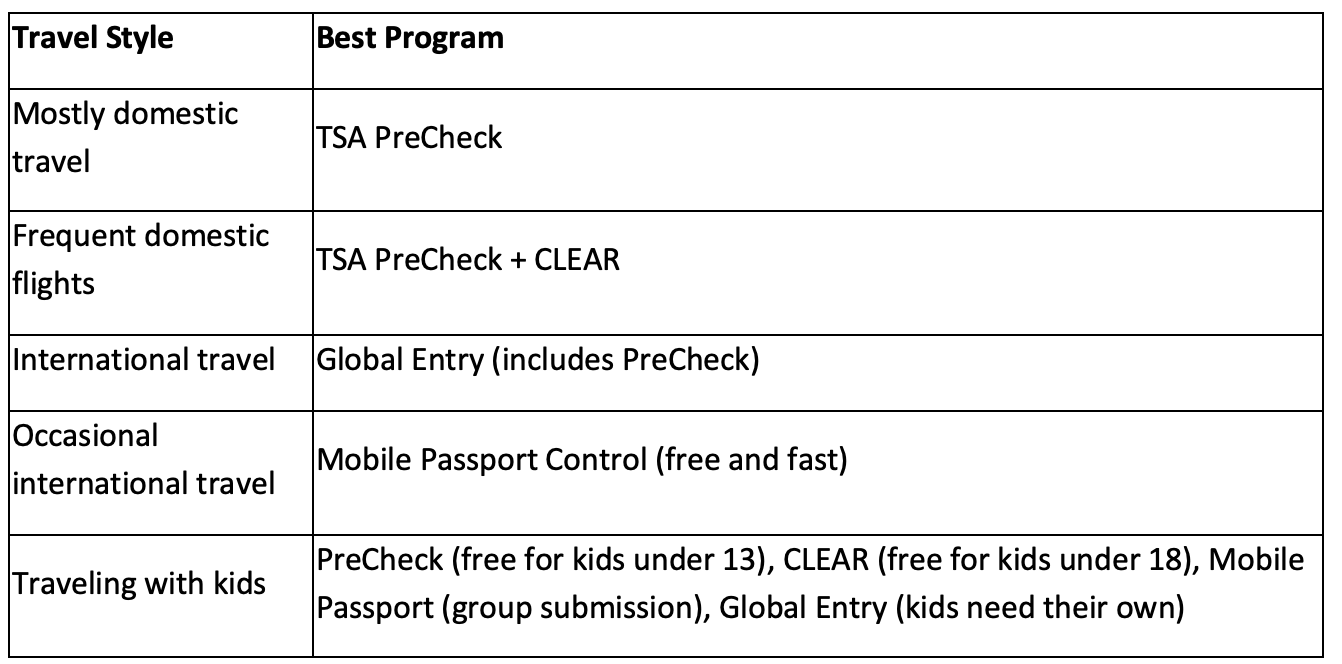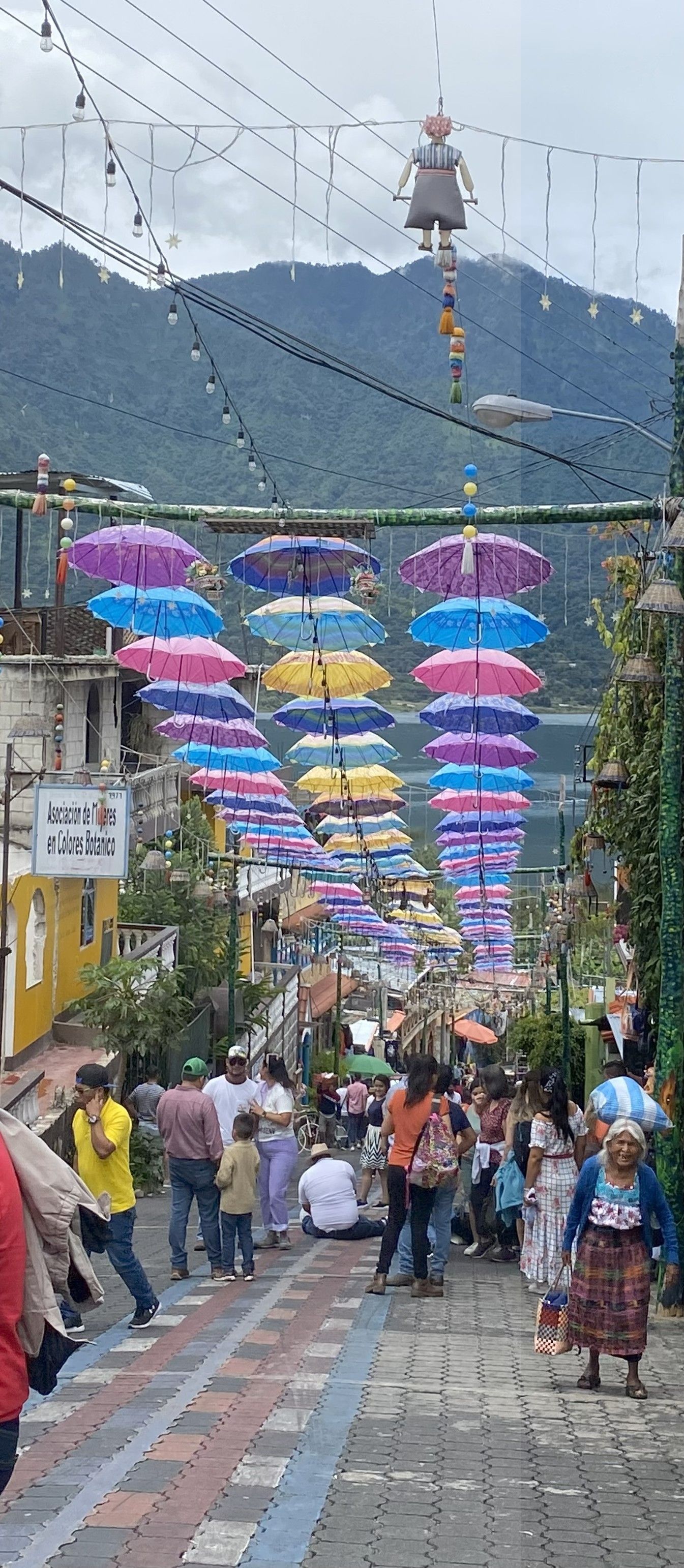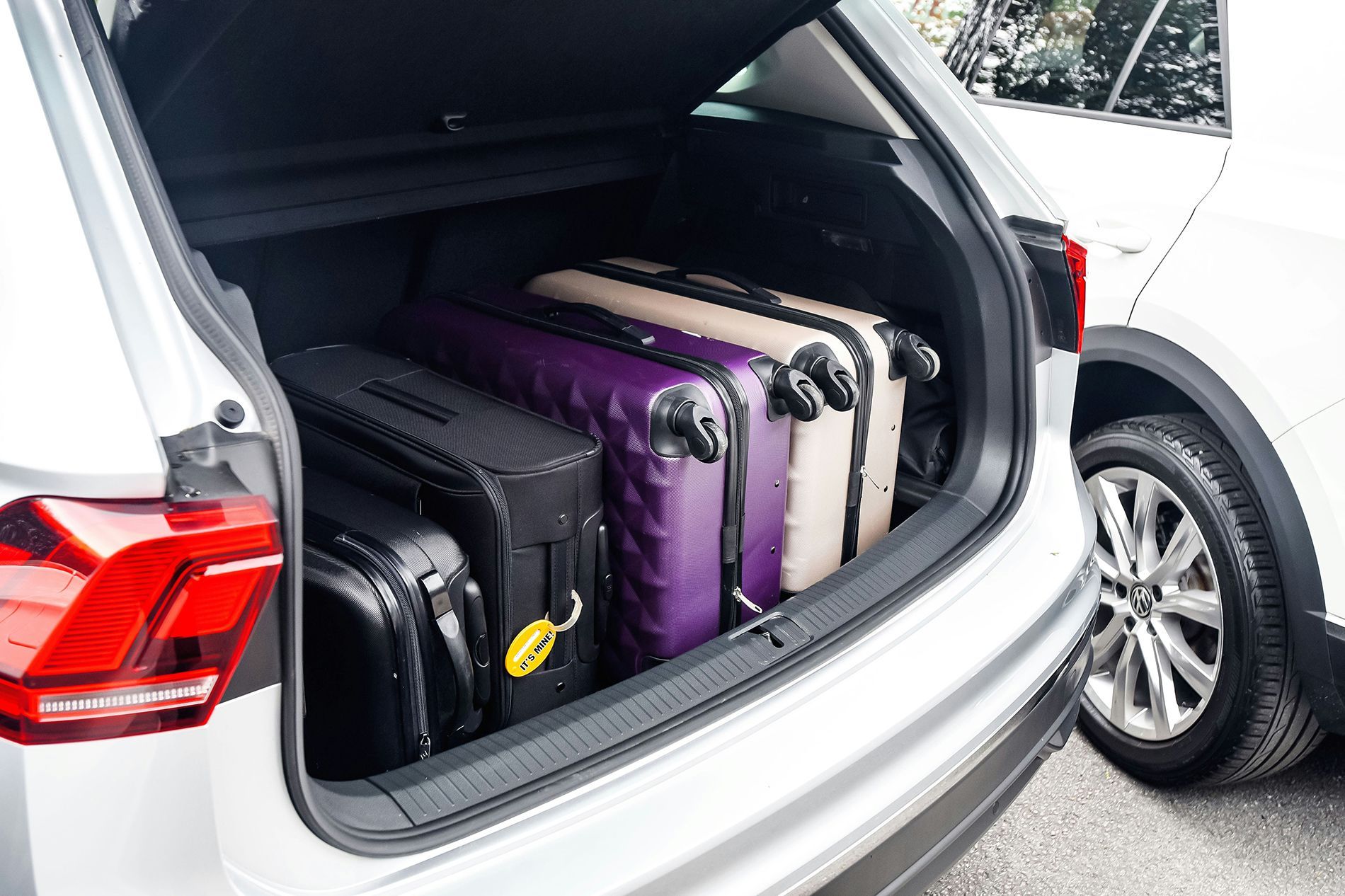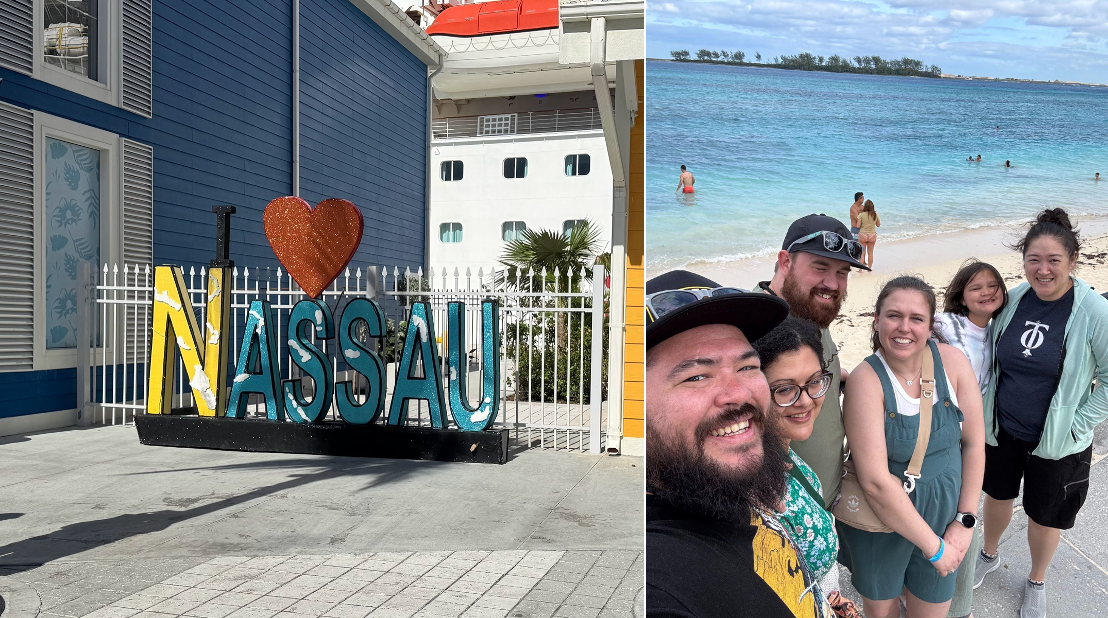Things to Know About TSA PreCheck, CLEAR, Global Entry & Mobile Passport Control
If you’ve ever found yourself stuck in a slow-moving security line or trapped in a long customs queue after an international flight, you’ve probably thought there has to be a better way to travel. The truth is, there is.
TSA PreCheck, CLEAR, Global Entry, and Mobile Passport Control are trusted traveler programs that make your airport experience smoother, faster, and less stressful. Whether you travel a few times a year or you're constantly on the go, there is an option that can make your trip feel more like a breeze and less like a marathon.
Here’s what each one does, how they work, what the process feels like, how to get them for free using the right credit card - and how they apply to kids.
1. TSA PreCheck: Faster, Easier Security
What You’ll Experience:
With TSA PreCheck, you use a designated security line that moves faster than the standard one. You keep your shoes, belt, and light jacket on. You also leave your laptop and liquids inside your bag. The process feels quicker and much more relaxed, especially during busy times.
How to Get It:
Apply online and schedule a 10-minute in-person appointment that includes fingerprinting and a background check.
Cost is $78 for a five-year membership.
Best For:
Travelers who mostly fly within the U.S. and want a less stressful security experience.
For Kids:
Children 12 and under can use the TSA PreCheck line for free when traveling with a parent or guardian who has PreCheck. No separate enrollment is needed unless they are 13 or older.
2. CLEAR: Skip the ID Line Entirely
What You’ll Experience:
CLEAR lets you bypass the TSA ID checkpoint. You head to a CLEAR kiosk, scan your fingerprints or eyes, and a staff member walks you straight to security screening. If you have TSA PreCheck, you’ll go to that line. If not, you’ll use the standard screening, but without waiting in the ID check line.
How to Get It:
Sign up online or at the airport and complete a quick biometric scan.
Cost is $189 per year, with frequent flyer and credit card discounts available.
Best For:
Travelers who fly often and want the fastest entry to security.
For Kids:
Children under 18 can use CLEAR for free when accompanied by a parent or guardian who is a CLEAR member. No separate registration or biometric scan is needed for minors.
3. Global Entry: Speed Through Customs After International Trips
What You’ll Experience:
Instead of waiting in long customs lines when you return to the U.S., you go straight to a Global Entry kiosk. You scan your passport and fingerprints, answer a few quick questions, and walk through. Most people are done in just a few minutes. Global Entry also includes TSA PreCheck for domestic travel.
How to Get It:
Apply online through the CBP website, receive conditional approval, and attend an in-person interview.
Cost is $100 for a five-year membership.
Best For:
International travelers who want to skip customs lines and benefit from TSA PreCheck.
For Kids:
Every traveler, regardless of age, must have their own Global Entry membership. That includes infants and toddlers. Each child must go through the application and interview process with a parent or guardian.
4. Mobile Passport Control: A Free, Fast Customs Shortcut
What You’ll Experience:
After landing in the U.S., open the Mobile Passport app, fill out your customs info on your phone, and head to the MPC lane. These lines are usually much shorter than the regular customs queue. Show your QR code and passport to the agent and move on. It’s fast, easy, and free.
How to Get It:
Download the Mobile Passport app, create a profile, and use it when you arrive in the U.S.
Free to use, with a paid version that adds features like document storage.
Best For:
Occasional international travelers who want a faster reentry without paying for Global Entry.
For Kids:
Families can use one Mobile Passport account for multiple travelers. You can add children to your profile and submit a group customs form, which makes the process even easier for families.
Which One Should You Choose?
Combining programs can offer the smoothest experience. For example, using CLEAR to speed through ID checks and TSA PreCheck for a faster screening line gives you a seamless security routine. If you travel abroad, Global Entry will save you time when you come home, and it automatically includes PreCheck.

Combining programs can offer the smoothest experience. For example, using CLEAR to speed through ID checks and TSA PreCheck for a faster screening line gives you a seamless security routine. If you travel abroad, Global Entry will save you time when you come home, and it automatically includes PreCheck.
How to Get It for Free: Credit Cards That Cover the Cost
You can get TSA PreCheck, Global Entry, or CLEAR for free if you use the right credit card to pay for your application.
How it works: Just pay the application fee with an eligible credit card, and your issuer will automatically credit your account. The credit usually shows up within a few days or weeks.
Cards That Reimburse TSA PreCheck or Global Entry
These cards offer up to a $100 credit every 4 to 5 years:
- Chase Sapphire Reserve®
- The Platinum Card® from American Express
- Capital One Venture Rewards Credit Card
- Bank of America® Premium Rewards®
- United℠ Explorer Card
- Citi® / AAdvantage® Executive World Elite Mastercard®
- Southwest Rapid Rewards® Performance Business
- U.S. Bank Altitude® Reserve Visa Infinite®
- IHG® Rewards Premier Credit Card
Cards That Reimburse CLEAR (annually)
- The Platinum Card® from American Express – up to $189 annually
- American Express® Green Card – up to $189 annually
- Delta SkyMiles® Platinum or Reserve American Express – CLEAR discounts and partial credits
- United Club℠ Infinite Card – CLEAR discounts available for cardholders
Pro tip: Some cards allow you to use the credit for someone else. You can pay for a spouse or child's Global Entry or TSA PreCheck with your card and still receive the reimbursement.
Final Thoughts
These programs can remove a lot of the stress from flying with faster lines, fewer delays, and smoother arrivals. Whether you're a solo traveler, a family with kids, or someone planning your first international trip, there's an option to make your experience easier. And with the right credit card, you might not have to pay out of pocket at all.
Not sure which setup fits your travel plans? I’m happy to help you pick the right program, credit card, or travel strategy to simplify your next adventure.







